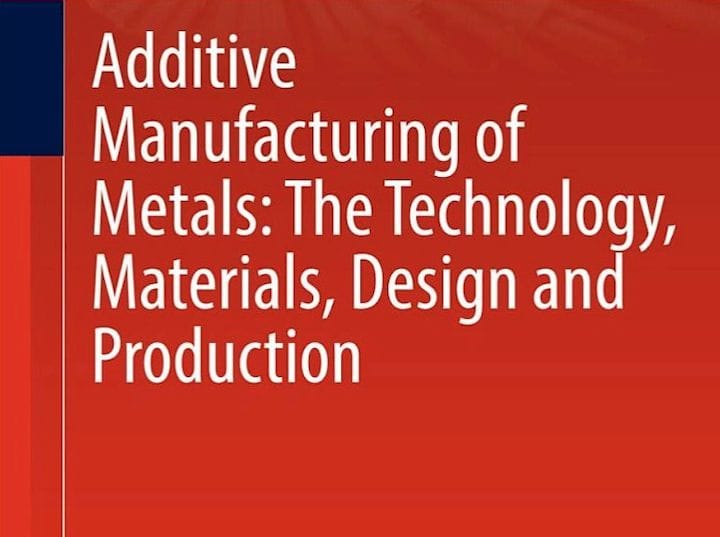![Additive Manufacturing of Metals [Source: Amazon]](https://fabbaloo.com/wp-content/uploads/2020/05/additive-metals-book-ov_result_img_5eb0a4ea487b9.jpg)
This week’s selection is “Additive Manufacturing of Metals: The Technology, Materials, Design and Production” by Li Yang, Keng Hsu, Brian Baughman, Donald Godfrey, Francisco Medina, Mamballykalathil Menon, and Soeren Wiener.
Metal 3D printing is a hot topic these days, as several industries have discovered its value. Most specifically, the aerospace industry has taken on metal 3D printing in big way, as it provides a way to produce “impossible” parts that are just as strong, but of far lighter weight. This is of obvious importance in aerospace, where weight is gold.
But that interest has drawn in many newcomers to metal 3D printing, and most have no idea of the vast complexity that is metal 3D printing.
To get some idea of the steps and complexity involved in metal 3D printing, you might want to read our analysis of the costs of metal 3D printing and a tour of a working metal 3D printing service.
And another way you can get more familiar with metal 3D printing is to read this book, which provides an excellent overview of the modern metal 3D printing space.
The book begins with an overview of 3D printing processes, including those not involved in metal 3D printing. This provides considerable perspective on the industry and demonstrates the differences from thermoplastic 3D printing and use of metal, which are significant.
They also explain the workflow through their “Additive Manufacturing Process Chain”, which takes ideas from CAD design all the way through to post-processing.
But there’s much more than that to metal 3D printing, and indeed this book delves deep into such areas as:
-
Specimen manufacturing
-
Design considerations
-
Grain size
-
Tensile properties
-
Fatigue properties
-
Creep
-
Fracture tolerance
-
Influence of dispersoids
The book then proceeds to examine the peculiarities of each of the major metal 3D printing processes, including: Electron Beam, Powder Bed Fusion, and the differences in usage between them. They even spend time discussing how 3D print-specific metal powders are manufactured and their implications.
Finally, a significant section of the book is spent discussing design considerations, as this is the most challenging part of metal 3D printing. One of the aspects discussed is support structures, a critical aspect of metal 3D printing, where thermal flows can wreck – or save – your metal 3D print.
This book is an excellent overview of the considerations required for getting deep into metal 3D printing and should be considered by anyone thinking of doing so.
Via Amazon











This week’s selection is “3D Printing Projects” by Dorling Kindersley, a.k.a. “DK”.